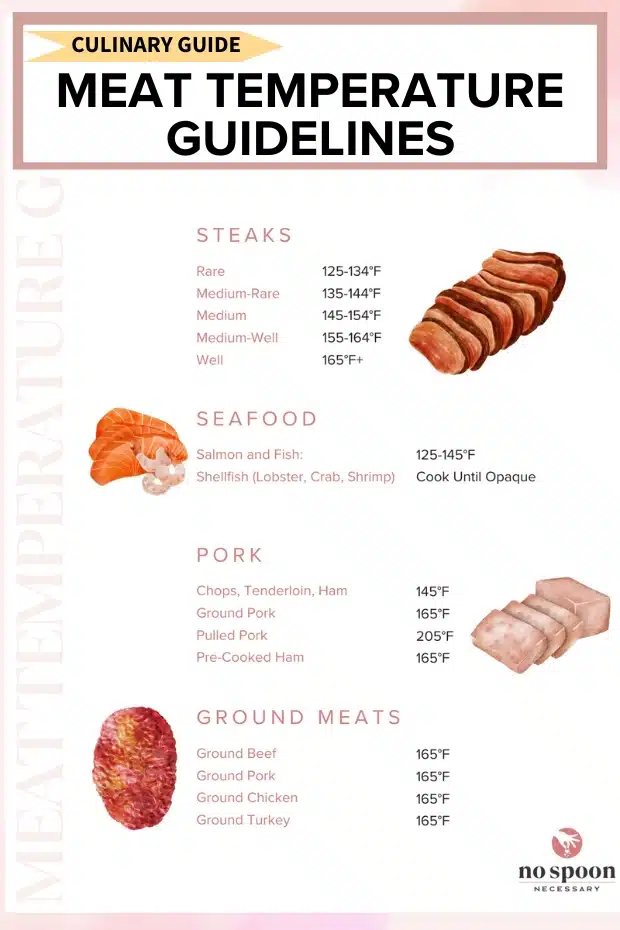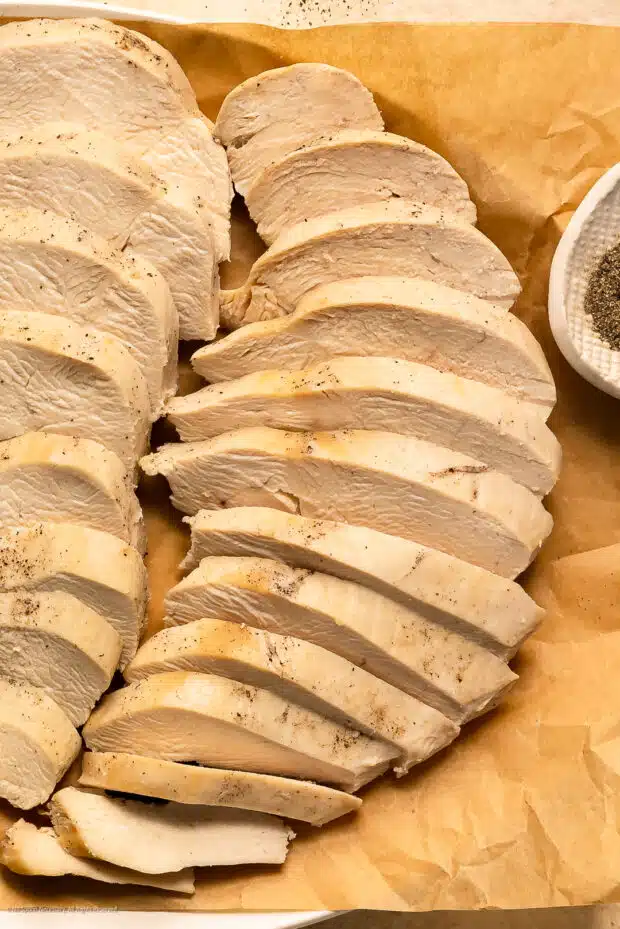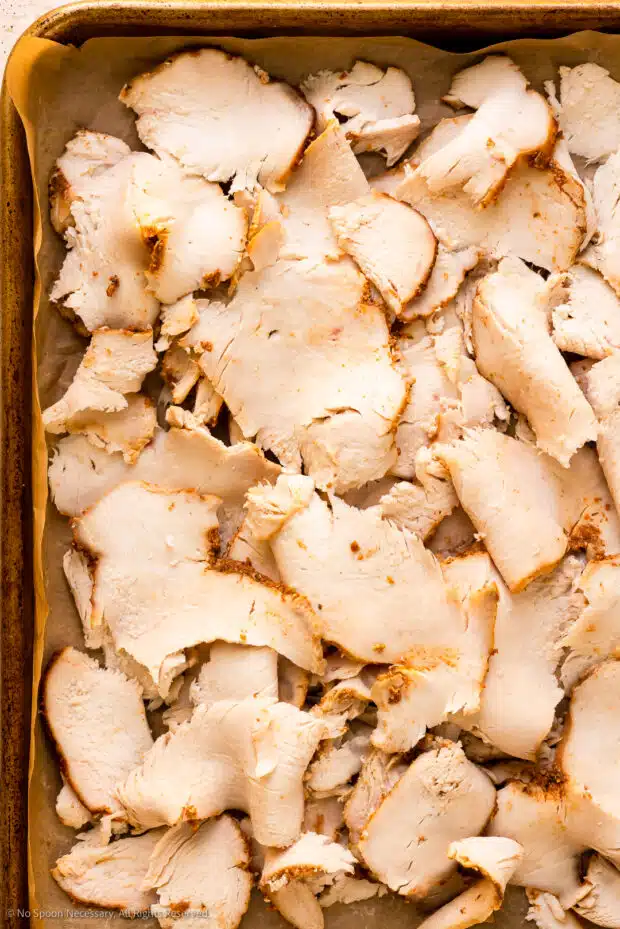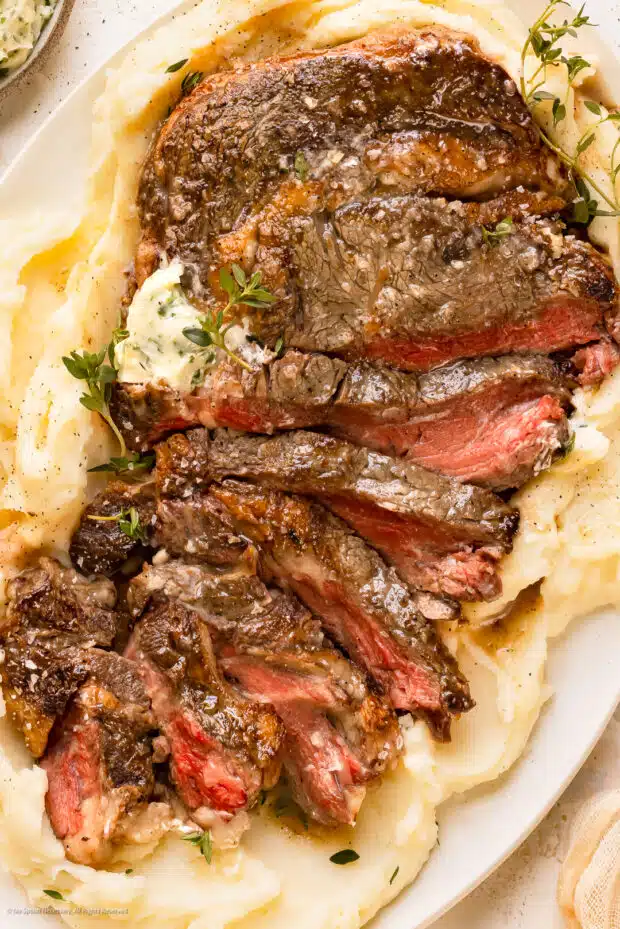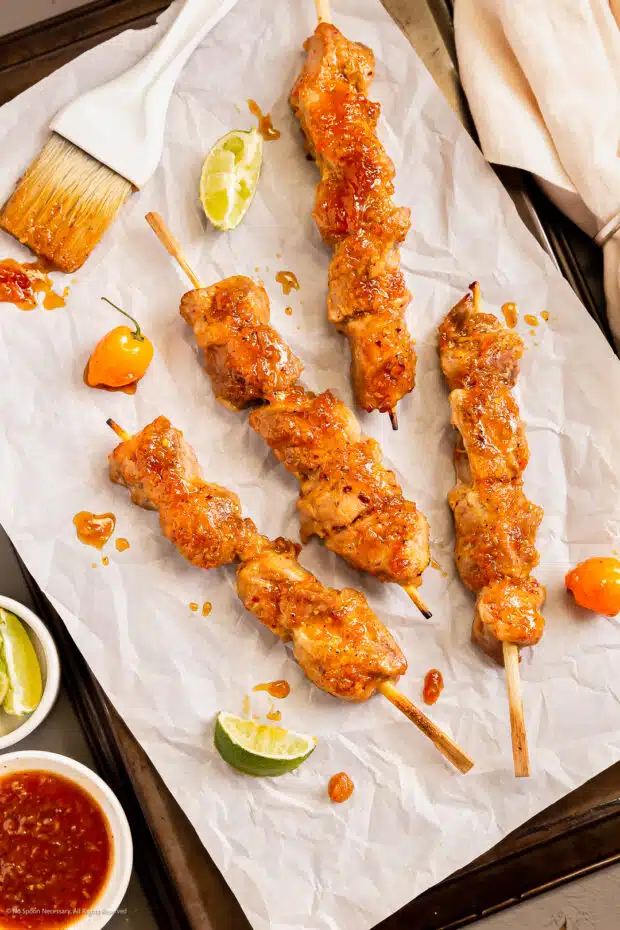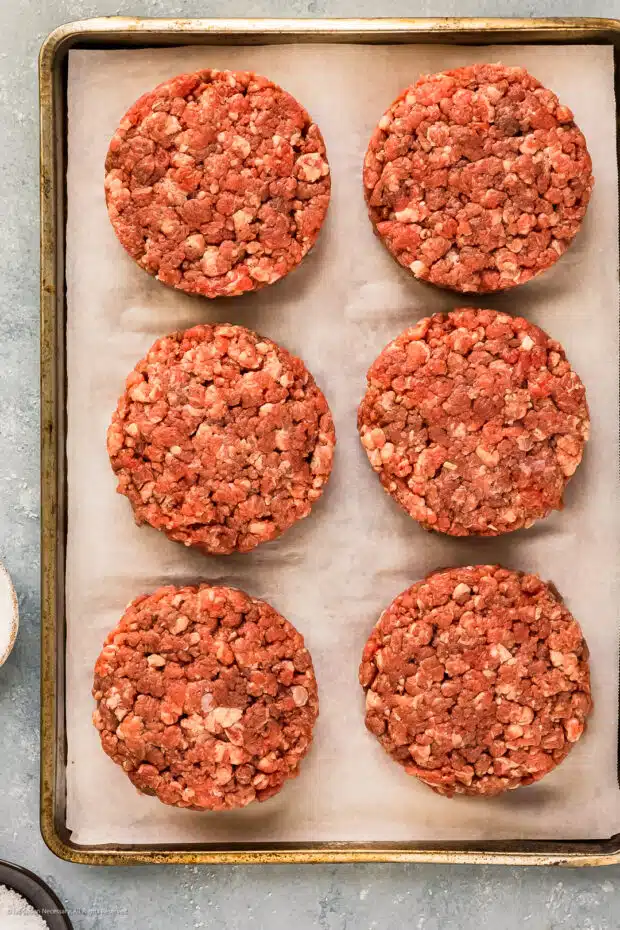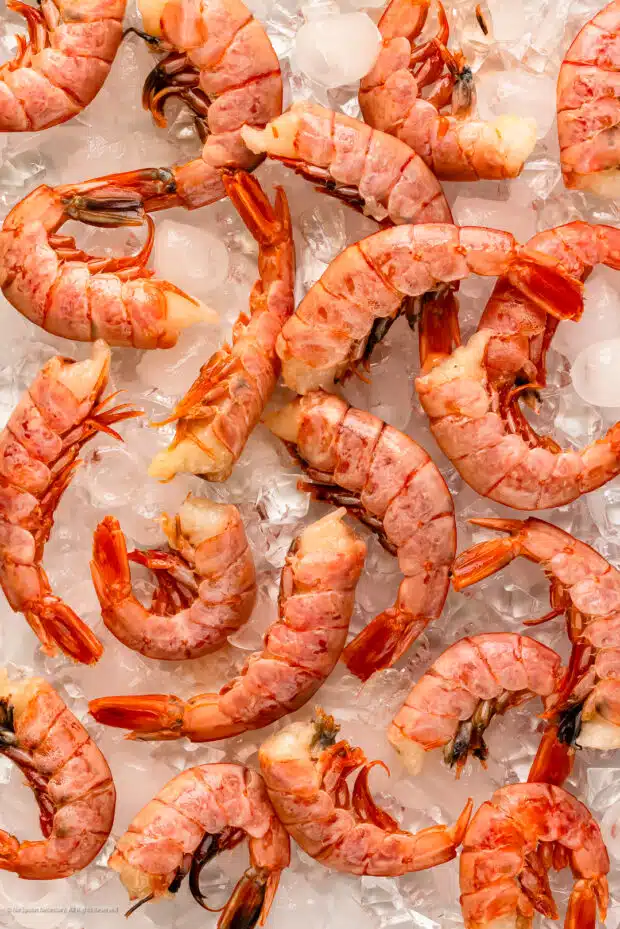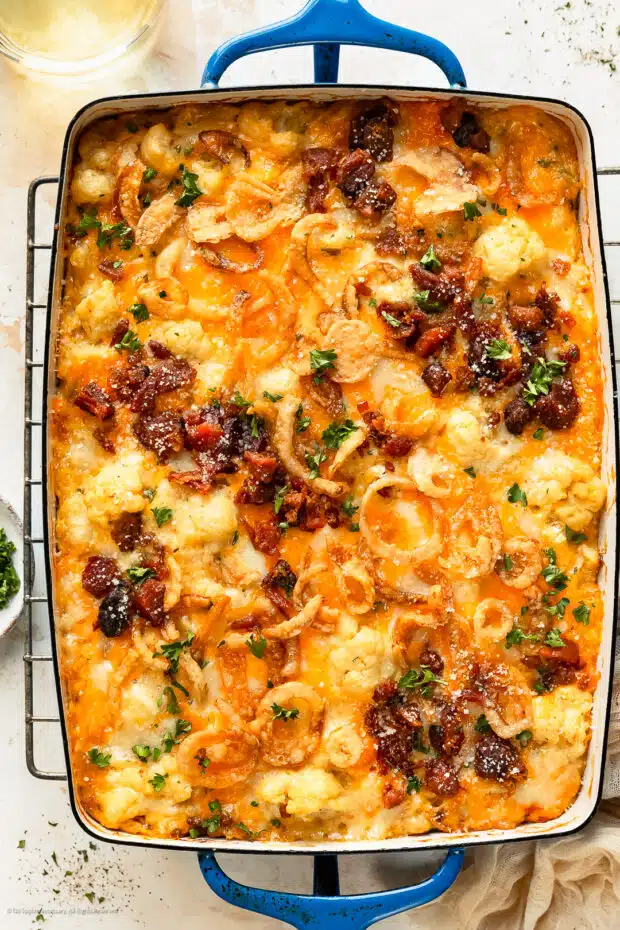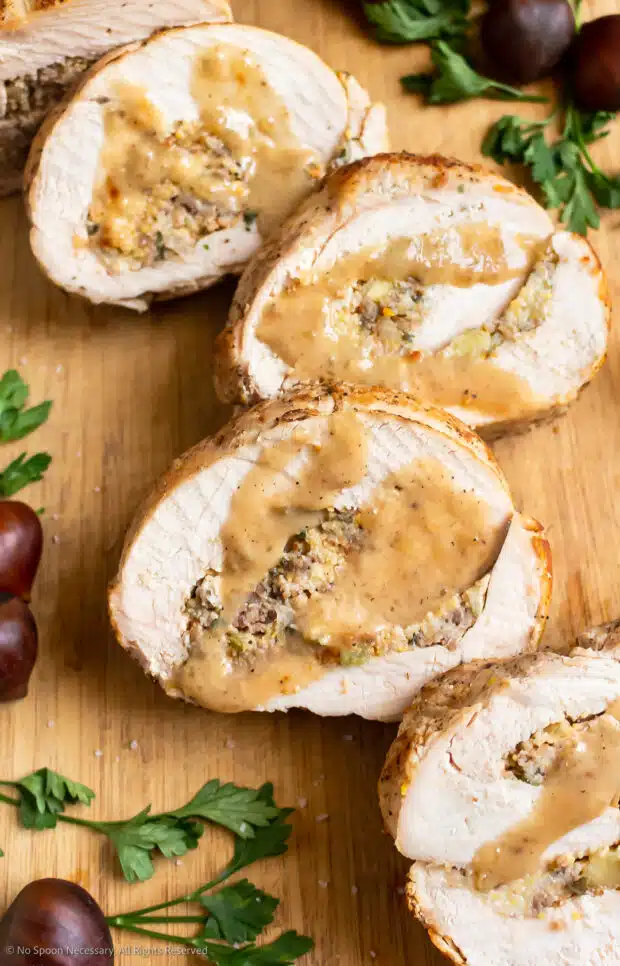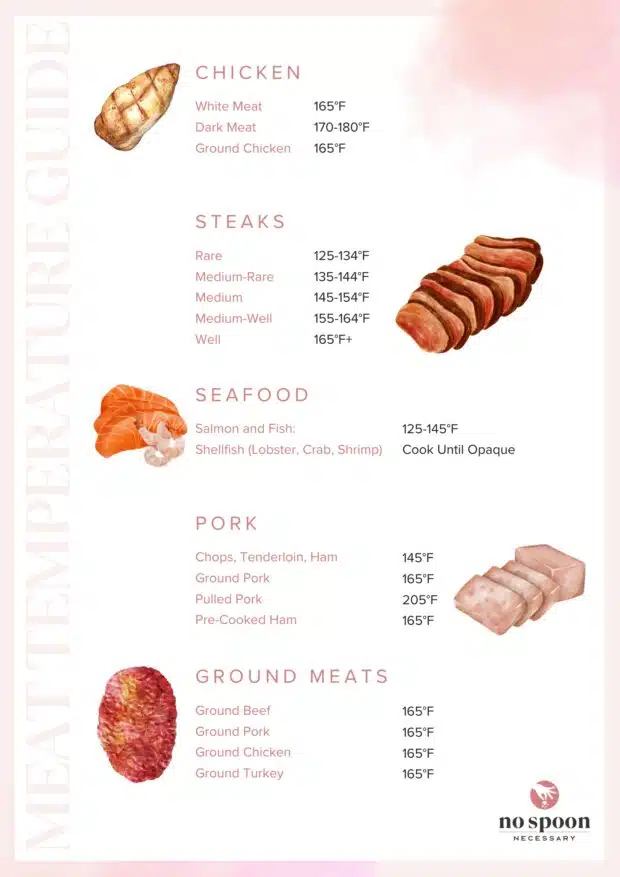This post may include affiliate links. Thank you for your support.
Whether you’re cooking steaks, chicken, pork, seafood, lamb, or ground beef, getting raw meat to the safe minimum internal temperature can make or break your meal. Use this free meat temperature cooking chart and guide to check the degree of doneness for any cut of meat and never second guess internal temperatures again!
Table of Contents
- About this meat temperature guide
- Why use a meat temperature cooking chart?
- Meat doneness
- Basic rules for food safety and meat temps
- Meat temp guidelines
- Internal temperatures for meats
- Meat temperature for poultry (chicken, duck, and turkey)
- Cooked meat temp for beef, lamb, and veal
- Doneness temperature for pork
- Cooked temperature for ground meats and sausages (burgers, meatloaf, and more)
- Temperature for cooked seafood (fish and shellfish)
- Doneness temp for reheating leftovers, casseroles, and egg dishes
- Resting meat after cooking
- Learn more culinary basics!
- Temperature chart for meat
About this meat temperature guide
Stop second guessing your culinary skills and elevate your cooking prowesses with this comprehensive guide to meat temperatures. In this simple tutorial you will discover the perfect doneness for every cut of meat – from sizzling steaks and tender roasts to succulent chicken or juicy ground meats and even leftovers – ensuring tender, deliciously flavorful, perfectly cooked results every single time!
Why use a meat temperature cooking chart?
No matter the method of cooking or the recipe you are making, one thing ALWAYS holds true: getting your meat to the proper temperature is crucial.
Getting the internal temperature correct is vital for two reasons:
- Food Safety. Improperly cooked meats can cause foodborne illness.
- Food Enjoyability. There’s a massive enjoyability difference between a basically-still-mooing cut of steak (raw), a juicy piece of steak (medium rare), and a tough steak (well done). Knowing temperatures of doneness will help ensure you are cooking meats correctly.
There are three basic steps to ensuring your meats, pork, poultry, and seafood are cooked to the perfect degree of doneness:
- First, you must know the safe and correct degrees of doneness for different meats.
- Second, you need to know how to use a meat thermometer probe properly.
- And lastly, you’ll need to let the meat rest before slicing and serving.
Meat doneness
Before we get into temperature guidelines and the meat temperature chart, you need to understand the meaning of “doneness”. The term doneness depends upon whether the cooking method uses dry heat or moist heat.
The terms moist heat cooking and dry heat cooking refer to the way in which heat is transferred from the source to the food.
Moist heat cooking methods include simmering, steaming, braising, and any method where the food product is surrounded by moisture. These methods are most suitable for long, slow cooking.
Dry heat cooking methods include roasting, grilling, radiation (microwave), and anything method where the food product is subject to dry air. Dry heat cooking is most suitable for short, quick cooking.
- Dry Heat: Meat is “done” when the proteins reach a desired degree of coagulation as indicated by internal temperature.
- Moist Heat: Meat is “done” when the connective tissues are broken down enough for the meat to be palatable. Typically, meat cooked using moist heat is well done, although there are a few exceptions.
Basic rules for food safety and meat temps
Whether you are a beginner in the kitchen or a home chef enthusiast, using a meat thermometer is crucial to food safety. I mean, if you don’t know how to use the thermometer probe correctly, a cooking meat temperature chart is pretty useless.
While there are a few ways to tell if food is done cooking, the most accurate way to test the interior doneness of meats is with a thermometer. There are two varieties of thermometers:
- Standard thermometers are inserted into the food before roasting and left in the roast while cooking
- Instant-read thermometers are inserted into food at any time, read as soon as the needle stops moving, and removed from the food.
Regardless of the thermometer you use in the kitchen, you’ll want to make sure it is properly cleaned and sanitized before using.
How to use a thermometer
Before you go poking a thermometer into various foods, let’s review some general rules for properly using a thermometer to temp food.
- Clean thermometer: To avoid cross contamination and food-borne illnesses, your thermometer must be properly cleaned with soap and water before (and after!) using.
- Thermometer location: A general rule when using your thermometer is to insert it into the center of the thickest part of the meat. Do not let the thermometer touch a bone, fat, or go through the meat as this will cause inaccurate readings.
- Calibrate thermometer regularly: For optimal results, you’ll need to check the accuracy of your thermometer on a regular basis. To check the precision of your thermometer, fill a large glass all the way up with ice water. Then, submerge your thermometer and read the display. A properly calibrated thermometer will registers 32 degrees.
- Whole birds: if roasting a whole turkey or chicken, make sure you check the internal temp the bird by inserting the thermometer into the thickest part of the thigh AND breast.
- Stuffed meats: If you’re cooking a meat that is stuffed, like a turkey roulade, check the temperature in the center of the stuffing as well as the center of the meat.
Meat temp guidelines
Meat temperature guidelines are the recommended internal temperatures when cooking meats. But here’s where things get interesting: there are varying temperature guidelines for cooking meats: the U.S. Department of Agriculture guidelines (USDA) and preferred restaurant guidelines.
If you look at the USDA minimum internal temperature guidelines, you’ll see they recommend cooking foods to a much higher temperature than a Chef would. The USDA recommends cooking all beef, pork, and lamb to a temperature of at least 145-degrees Fahrenheit – this temperature is into the medium to medium-well range. And, I don’t know about you, but I order my steak medium-rare (130-degrees).
The USDA recommends higher temperatures to play it safe and ensure food safety across the board. Their meat temperature guide lines are designed so that everyone – from the burger flipper at Mc-e-dee’s to the novice home cook – can understand food safety.
Internal temperatures for meats
Below you’ll find the USDA guidelines and typical restaurant temperatures for cooking various foods. Please note that all temperatures listed are before resting the meat.
Meat temperature for poultry (chicken, duck, and turkey)
Whether cooking chicken wings, dark meat thighs, white meat chicken breasts, or a whole turkey, below are the safe temperatures recommended when cooking poultry:
- Restaurant: 160-degrees (before resting)
- USDA: 165-degrees (before resting)
Cooked meat temp for beef, lamb, and veal
From rib eyes and rib roasts to veal cutlets and lamb chops, below are the minimum safe internal temperatures for meat:
- Restaurant (before resting)
- Rare: 120-125 degrees
- Medium-Rare: 130-135 degrees
- Medium: 140-145 degrees
- Medium-Well: 150-155 degrees
- Well-done: 160-165 degrees
- USDA: 145-degrees (before resting)
Doneness temperature for pork
Regardless if you’re cooking pork chops, pork tenderloins, or a holiday ham, below you’ll find the recommended internal temperatures for all types of pork:
- Restaurant: between 138-140 degrees (before resting)
- USDA: 145-degrees (before resting)
Cooked temperature for ground meats and sausages (burgers, meatloaf, and more)
Regardless of if you’re cooking chicken meatballs, beef meatballs, or your granny’s meatloaf, below are the recommended internal temperatures for ground meat.
HOWEVER, please note, restaurants typically grind whole cuts (like steaks) into ground meat – in house. If you are also grinding meats at home, you can follow the restaurant guidelines and suggestions. But, if you purchase your ground meats at the store, you’ll need to follow the USDA recommendation in the meat temperature guide.
- Restaurant (before resting)
- Rare: 115-degrees
- Medium-Rare: 125-130-degrees
- Medium: 140-degrees
- Medium-Well: 150-degrees
- Well-done: 160-degrees
- USDA: 160-degrees (before resting)
Temperature for cooked seafood (fish and shellfish)
If you’re cooking anything from the sea – from salmon and scallops to crab and lobsters – you’ll want to at least cook the seafood until the meat is opaque in color. Below are the recommended temperature guidelines when cooking fish and shellfish.
- Restaurant: below 140-degrees, preferably closer to the 125-degree mark.
- USDA: 145-degrees
Doneness temp for reheating leftovers, casseroles, and egg dishes
Irregardless of if you’re making a casserole (like thanksgiving stuffing or brussels gratin), egg dishes (like a frittata, quiche, and egg strata, reheating leftover chicken breast, or heating up a prepared food item, you’ll want to follow the recommended heating instructions and the minimum temperatures from the meat cook temp chart below.
Egg dishes
- Restaurants: 160-degrees
- USDA: 160-degrees
Casseroles and leftovers
- USDA: 165-degrees
Resting meat after cooking
After you’ve used the chart of meat temperatures to cook your cut of meat, you’ll need to rest it. Resting meats after cooking is just as crucial a step as proper cooking. There are two purposes to resting foods after cooking:
- Redistribution of juices: Resting meat allows time for the meat to relax and the internal juices to redistribute themselves evenly throughout.
- Carry over: Carry over cooking refers to the cooking that occurs when you remove meat from the heat source. Typically, carry over cooking results in rise of 5-degrees post-cooking.
Rest times vary from dish to dish and recipe to recipe. However, a general restaurant-guideline for resting meat is typically at least 5-10 minutes, or longer for larger roasts like a rib roast. The USDA recommends a 3-minute rest time for meats, except for hamburgers, which according to the U.S. department of agriculture do not need to be rested. (I rest hamburgers for 2 minutes.)
There you have it! If you’re interested in stress-free and guess-free cooking, print this meat temperature guide, get yourself a good thermometer (I recommend Thermapen instant-read thermometer), and never, EVER, second-guess or over-cook your food again. Woohoo!
Until next time, cheers and happy cooking!
Cheyanne
Craving MORE? Follow all the deliciousness on Facebook, Pinterest and Instagram!
Learn more culinary basics!
- Stock the Pantry List For Easier Home Cooking
- Food Ideas for Large Group
- Varieties of Fresh Herbs and How to Cook with Them
- Best Ways to Store Fresh Herbs
- 3 Ways to Thaw Frozen Shrimp
- How to Clean Shrimp Like A Pro
- Conversion Chart for Baking: Bake like a Pro
- Kitchen Conversion Chart: Your Guide to Cooking Success
- Ingredient Substitutes for Recipes
- How to Cut Any Recipe in Half
Temperature chart for meat
(Use this handy-dandy free printable when cooking raw meats.)
Here’s your handy-dandy printable temperature chart for cooking raw meats. Print or download at your convenience:
Get your free printable here: Temperature Chart for Cooking Meat
Article references
- Gisslen, W., Griffin, M. E., & Bleu, L. C. (2006). Professional Cooking for Canadian Chefs. John Wiley & Sons.
- America, C. I. O. (2011). The Professional Chef. John Wiley & Sons.
- López-Alt, J. K. (n.d.). The Food Lab: Better Home Cooking Through Science. W. W. Norton & Company.
@No Spoon Necessary. All images and content are under copyright protection. Please do not use any images without prior permission. Kindly do not publish this recipe without prior consent. If you want to reference this recipe, please do so by linking directly to this post.

